Employee Management with AnyDB
Overview
This guide shows how to use AnyDB to manage your employee data and HR workflows in a structured, customizable way. You’ll learn how to create employee records, track roles and performance, manage documentation, and connect related data such as onboarding, timesheets, and equipment—all from a unified workspace.
Business Problem
HR teams often manage employee data across disconnected systems like spreadsheets, HRIS platforms, emails, or folders. This leads to duplication, inconsistent data, and a lack of visibility across teams and processes. Updating records or managing lifecycle events (onboarding, exits, equipment returns, etc.) becomes error-prone and manual.
Solution Summary
With AnyDB, you can:
- Create and maintain centralized employee profiles using customizable templates
- Link employees to onboarding tasks, performance reviews, timesheets, equipment, and more
- Store files like resumes, contracts, and IDs securely within each employee record
- Assign follow-up actions such as 30-day reviews or compliance updates
- Use dashboards to track HR health metrics (headcount, retention, onboarding completion)
Step-by-Step Instructions
1. Create a New Employee Record
- Go to your People or HR database
- Click + Add Item
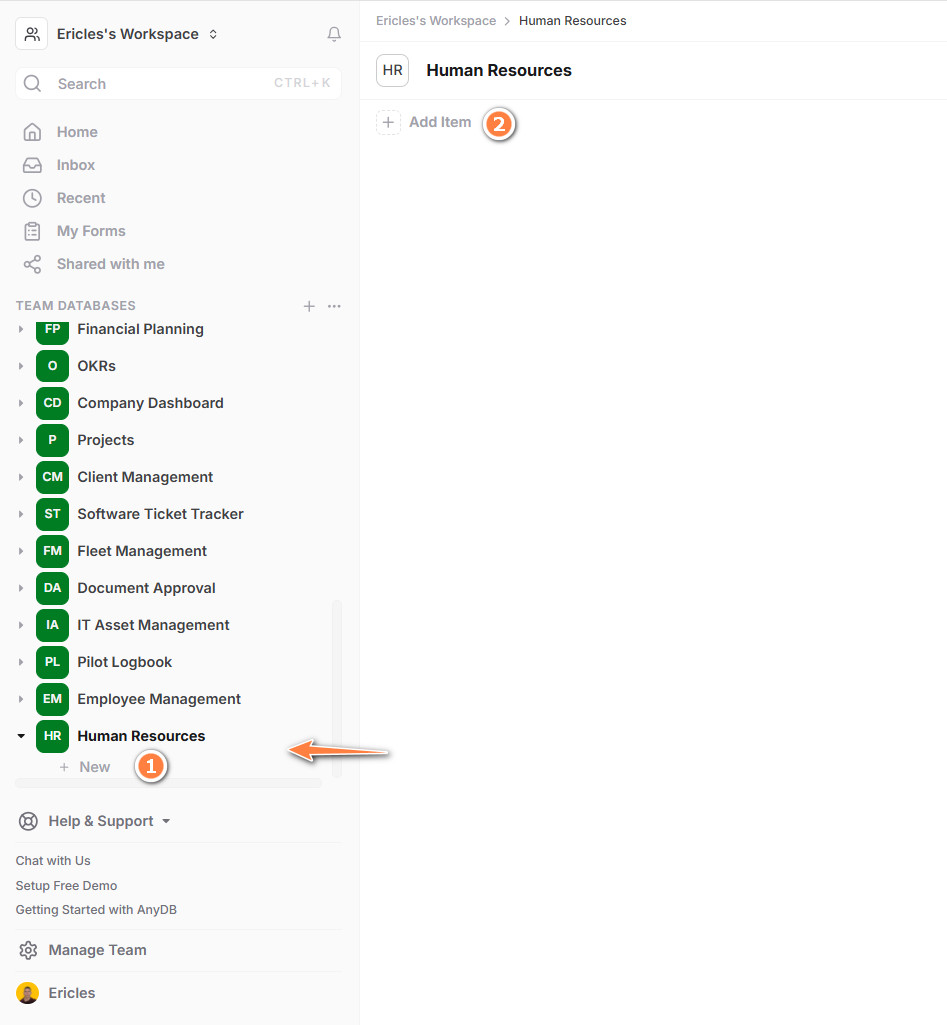
- Select the Employee Record template
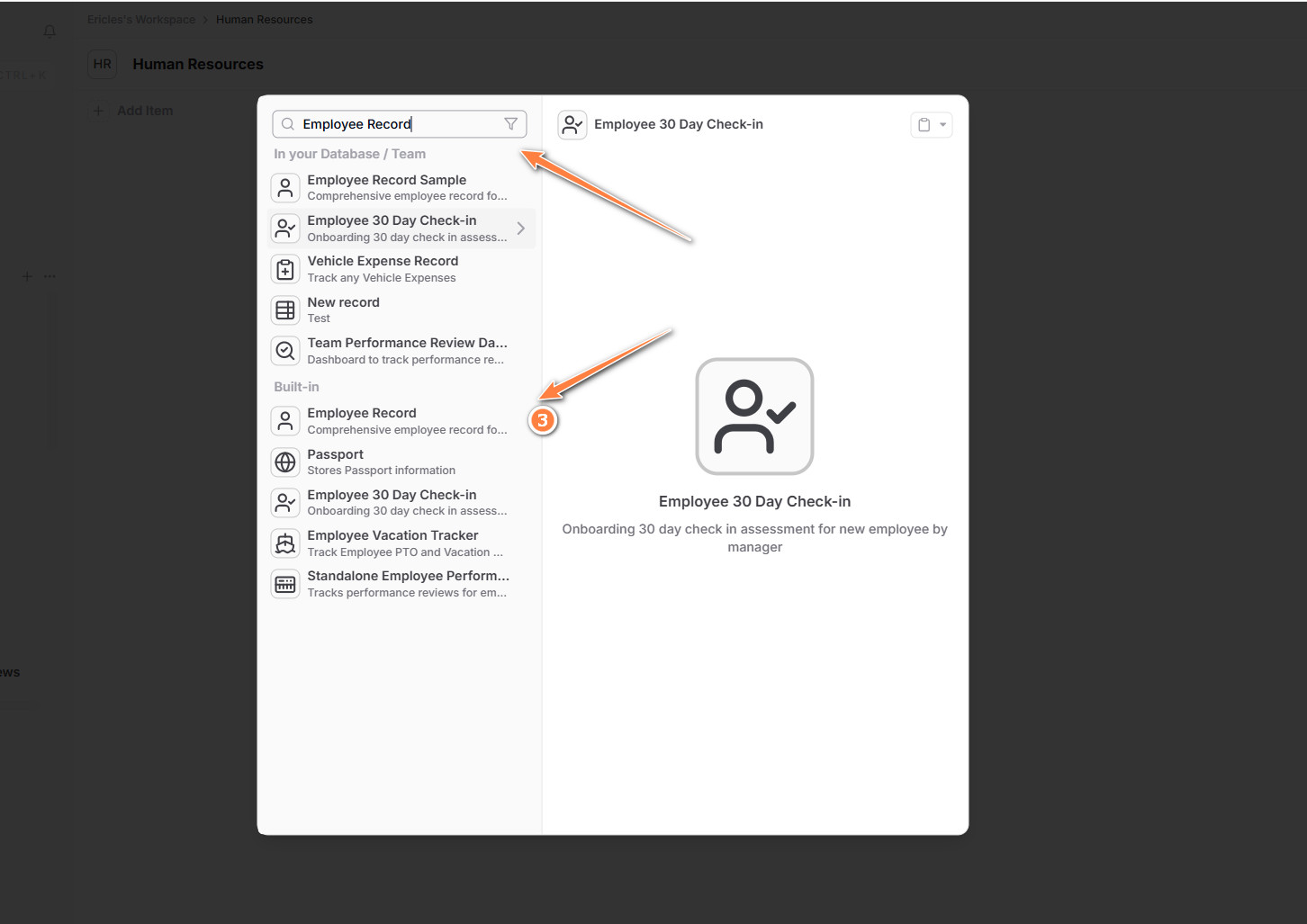
- Fill in fields such as name, title, department, email, start date, and manager. You can also attach a photo, upload files (like resumes or contracts), and link related records (e.g., onboarding, timesheet or reviews), as shown in the video:
You can also connect the employee data to dashboards and to other employee data such as his or her supervisor's data, manager's, etc.
2. Link Related HR Records
- Use reference fields to associate the employee with:
- Onboarding checklists
- Equipment issued
- Timesheets or shift schedules
- Performance reviews or feedback
- Each related item remains connected to the employee profile

3. Assign Ownership or Follow-Up
- Set a Manager using a dropdown or reference field
- Add a Follow-Up Date (e.g., 30/60/90-day review)
- Use comments or task fields to assign items to team members
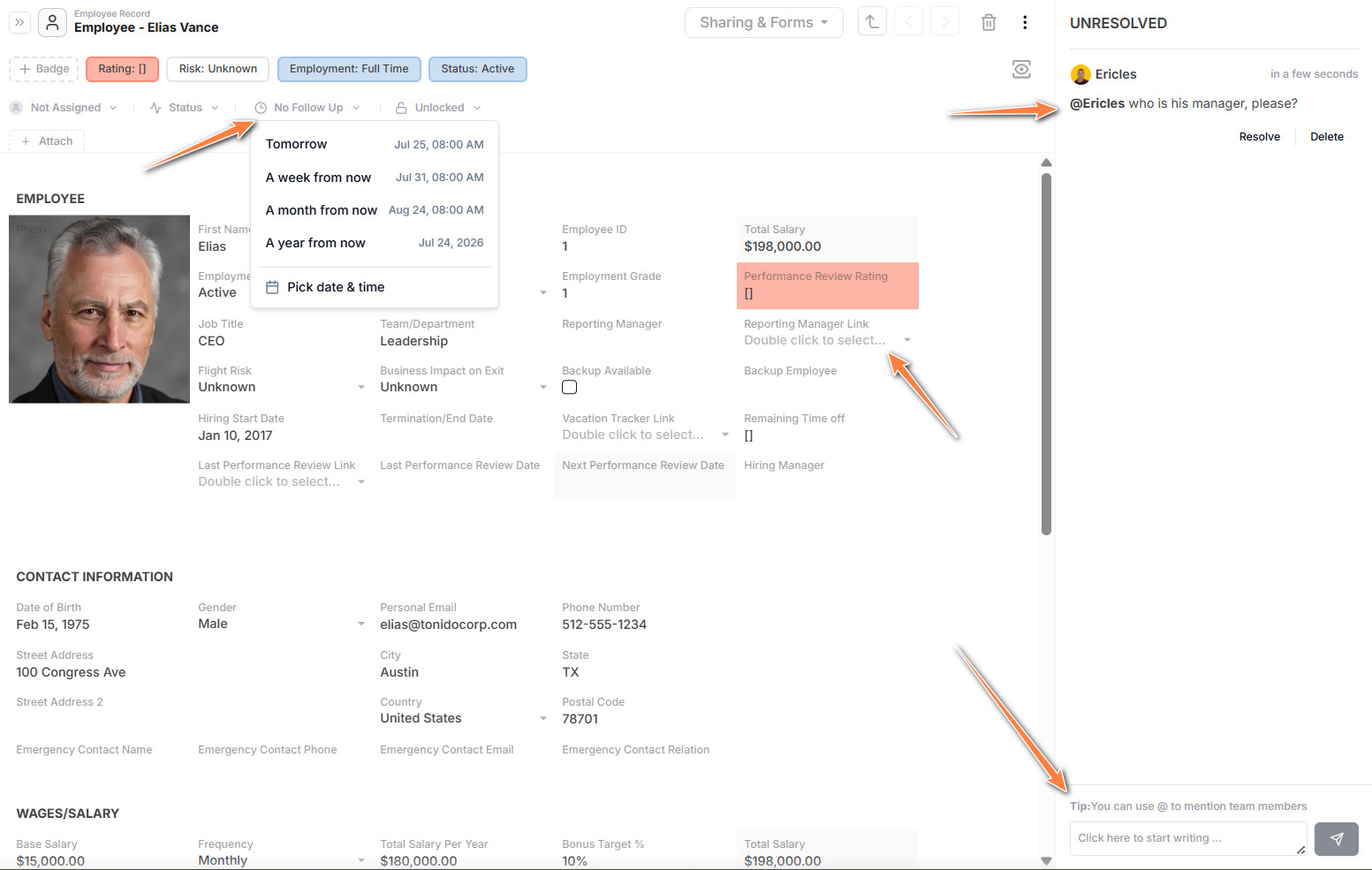
4. Track Documents and Files
-
Upload signed documents (NDAs, offer letters, ID proofs) directly into the employee profile
-
Tag them for easier retrieval
-
Share with HR, finance, or IT teams using role-based access
- Go to Share & Forms
- Click on share and type the email(s) and then click on Invite
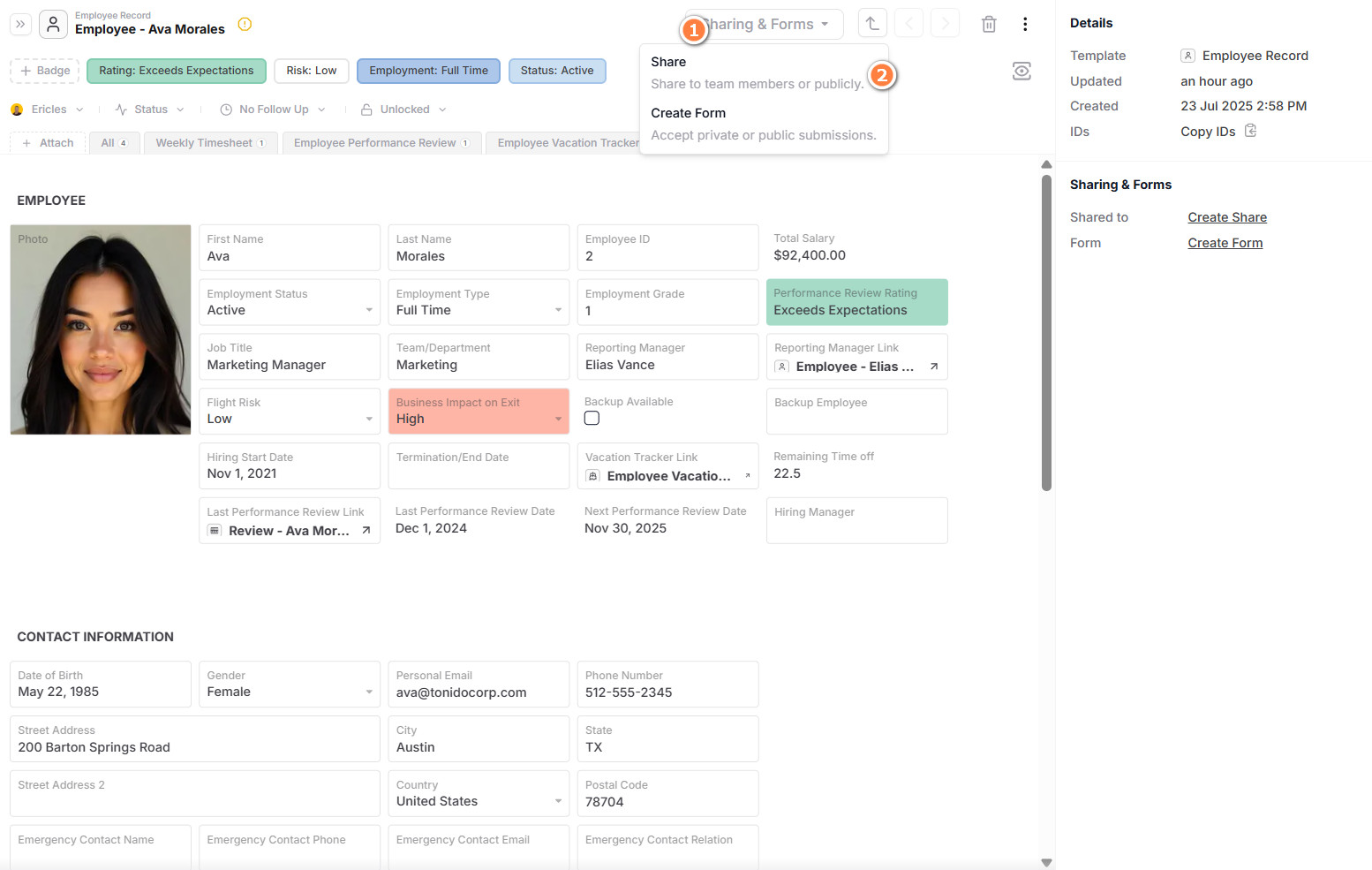
Then you can set up permissions by:
- Clicking on the tree dots
- Then selecting the role in the checkbox
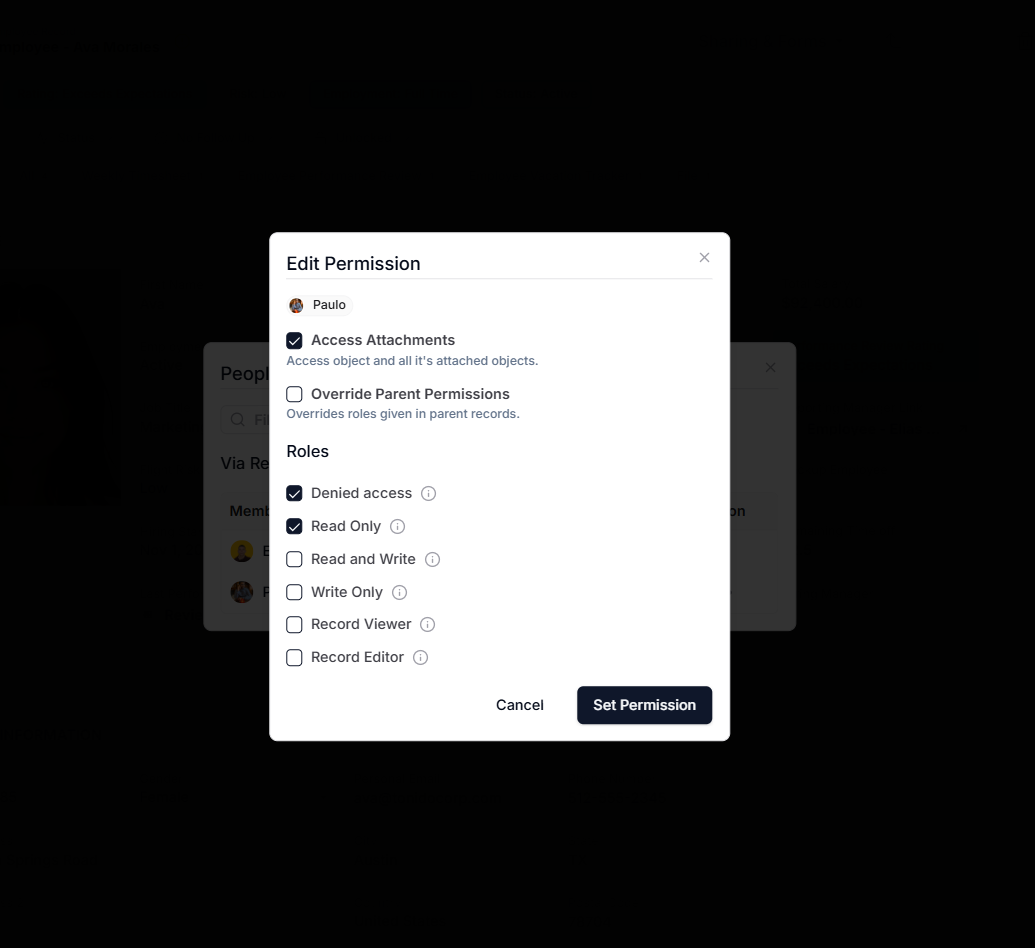
Data Model & Structure
| Field | Description |
|---|---|
| Full Name | First and last name of the employee |
| Job Title | Current role |
| Department | Team or function the employee belongs to |
| Start Date | Official date of joining |
| Manager | Reference to another employee or user |
| Status | Active, On Leave, Resigned, etc. |
| Employee ID | Unique identifier or HR code |
| Email / Phone | Contact details |
| Office Location | Office or remote region |
| Files & Documents | Attachments like resumes, contracts, ID proofs |
| Notes | Additional comments or history |
| Related Records | Onboarding, Timesheets, Assets, Reviews |
Reporting & Views
Use filters and saved views to track:
- Employees by department, location, or status
- Start dates and anniversaries
- Pending onboarding or follow-ups
- Roles or team composition
Build dashboards to track:
- Headcount trends over time
- Average time to onboard
- Equipment issued and returned
- Retention and turnover metrics
Sharing & Collaboration
- HR can manage and control access with record-level permissions
- Managers can view and update only their team’s records
- Shared documents stay attached to the employee profile
- Add guests (e.g., finance or external advisors) when needed
Tips & Best Practices
- Use folders or databases to group employees by office, function, or employment type
- Tag records for easy grouping (e.g., Full-Time, Contractor, Intern)
- Attach checklists or SOPs to standardize onboarding/offboarding
- Link to external records (e.g., benefits portal or payroll system)
Note: The free plan supports unlimited employee documents but has storage limits. Upgrade for larger file support and advanced HR workflows.
Who This is For
- HR Teams – for managing employee lifecycle and compliance
- People Ops – for performance, engagement, and onboarding
- Team Leads – to track